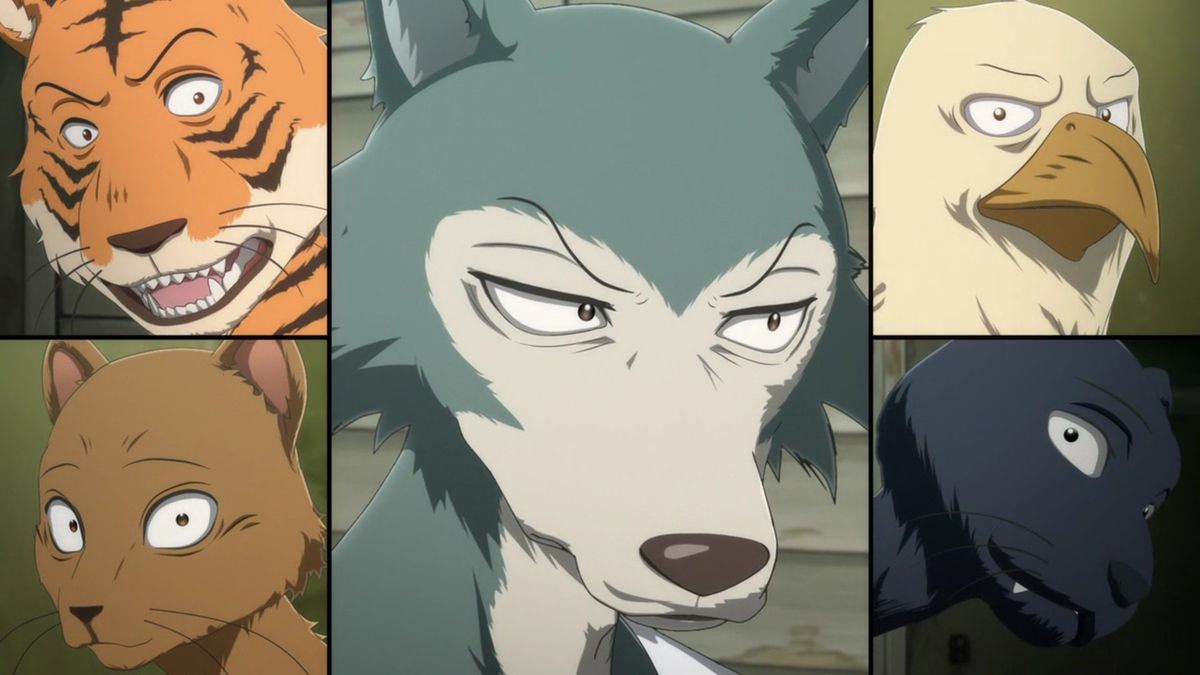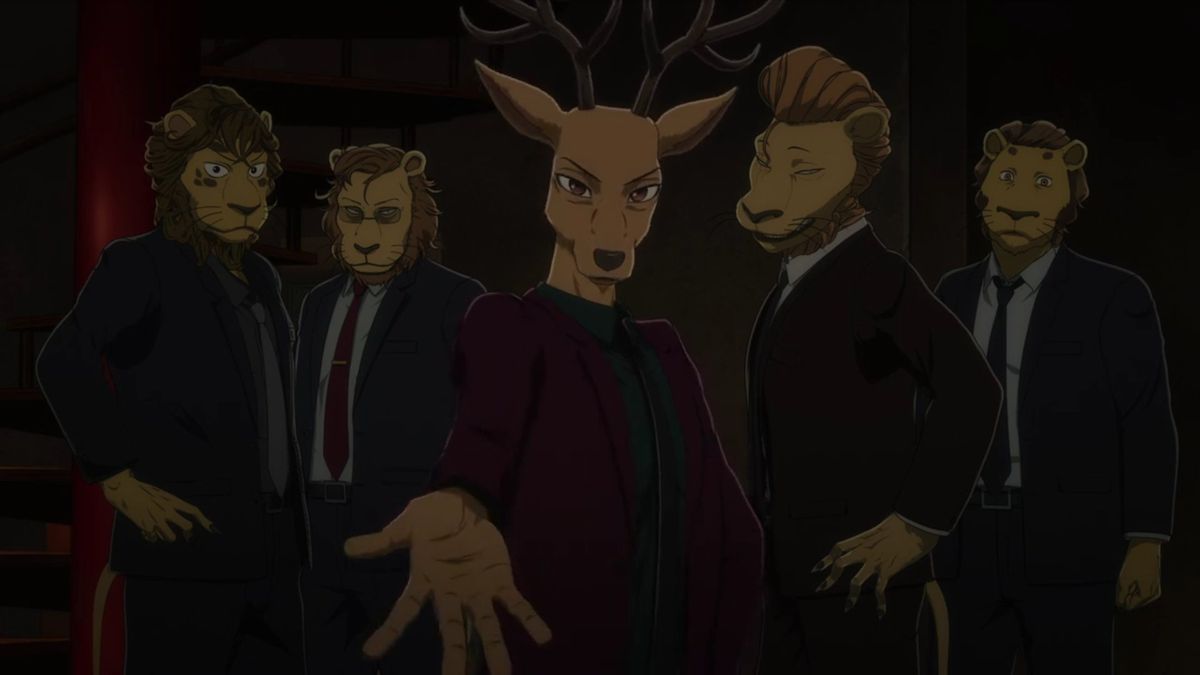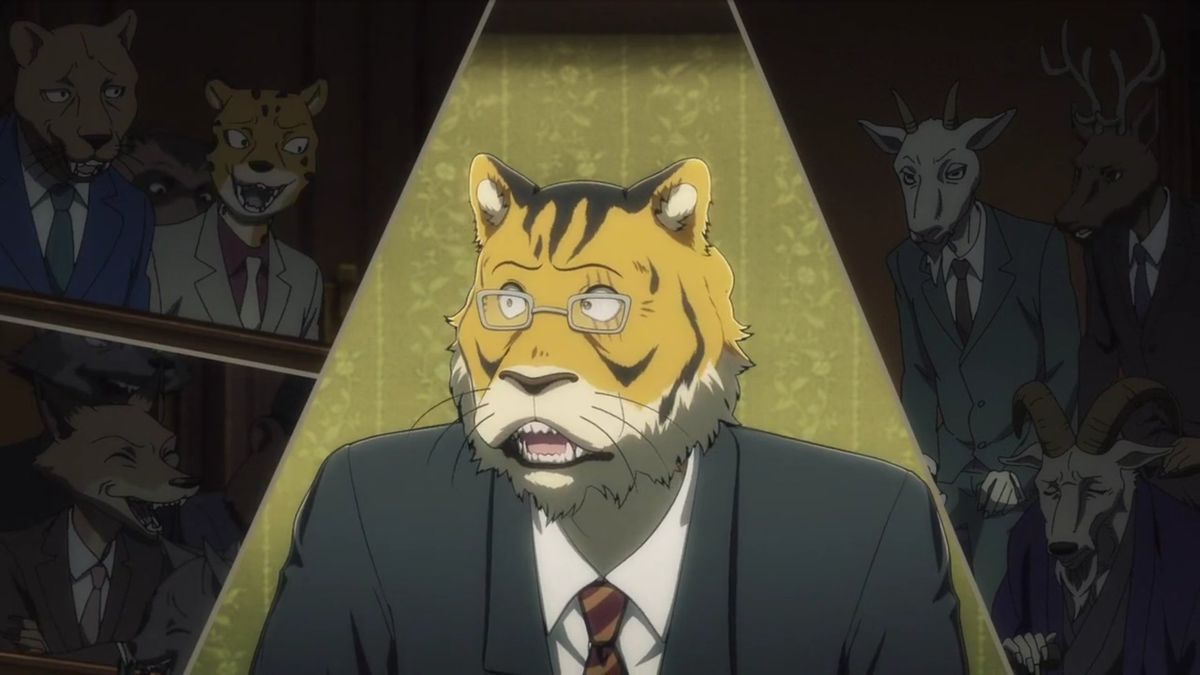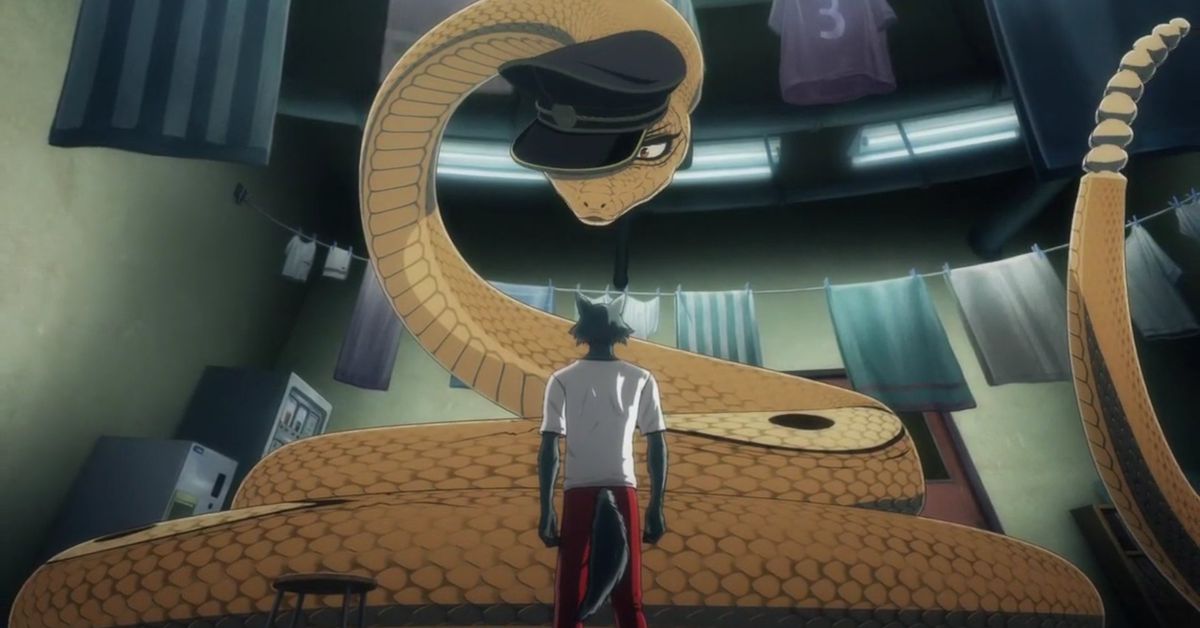Beastars, and its freewheeling murder mystery-mafia-romance-melodrama, is back. The second season of the highly acclaimed anime produced by Japanese animation studio Orange and based on Paru Itagaki’s popular manga of the same name, premiered on Netflix in North America this past weekend following the end of its run on Japanese television this past March.
Featuring the return of director Shinichi Matsumi (Steamboy, Land of the Lustrous), Beastars season 2 deepens the relationships and arcs of its principal cast, with protagonist Legoshi — spurred by his complicated affections for his herbivore classmate Haru — thrusting himself into the task of hunting down the perpetrator behind Tem the Alpaca’s murder. Meanwhile, Louis the deer, Legoshi’s rival for Haru’s affections, drops out of Cherryton Academy to pursue a dark and winding journey of self-discovery as the new boss of the Shishigumi, the carnivore crime family whose former leader Louis killed at the end of the first season.
Arguably, apart from the anime’s compelling characters and byzantine emotional plotlines, the strongest element of Beastars appeal is its animation. The quality of 3D CG-animated anime as a whole can be pretty hit or miss; for every Land of the Lustrous or Dorohedoro, there’s a Ghost in the Shell: SAC_2045 or Ex-Arm. Orange, however, has cracked the formula of how to create a compelling 3D CG anime with the aesthetic flair and dexterity of traditional 2D animation.

Image: Orange
Beastars presents a modern civilization populated by anthropomorphic animals à la Zootopia or BNA: Brand New Animal, with society unofficially segmented between carnivore and herbivore species of animals. The bulk of Beastars takes place at Cherryton Academy, one of the few boarding schools in the world of Beastars where herbivores and carnivores live side-by-side with one another.
Naturally, with this many characters and species onscreen, the question becomes how to animate all these different variables in a way that looks natural and entertaining without coming across as uncanny or mechanical in movement. Orange navigates this challenge through a combination of several techniques; The first of these is designing each character to roughly conform to the same proportions, if not size, as that of the main character Legoshi. There’s a practical effect to the choice: similar designs lightens the workload that would otherwise go into creating new animations for the entire cast of supporting characters. Orange also uses motion-capture technology to record the facial expressions and physical performances of the series’ voice actors, allowing the staff to create more natural and nuanced character animations.

Image: Orange
But above all, the beauty of the CG stems from the choice to regularly alternate the frame rate between select scenes and sequences throughout the show depending on what’s going on. This allows the show to imitate the nuances and feel of 2D animation in certain scenes, such as when characters are having conversations and moving across background, while emphasizing the smoothness and fluidity afforded by 3D animation in others, specifically during panning shots or dynamic fast-moving sequences where characters are physically fighting.
In choice moments, Orange will also intersperse two-dimensional renditions of characters and frames during select moments of the series. It’s particularly noticeable when used to depict infrequently recurring characters that show up for only one or two moments of the season, like the squirrel, elk, and dog dressed in business attire who dish on a council meeting meant to decide the new Beastar, or the split-screen exchanges between the members of said council meeting in the beginning of the second episode.

Image: Orange
These scenes exist not only for the practical purposes of reducing the time and labor necessary to animate these characters in 3D only for the audience to never see them again, but also to depict reactions and emotions that would otherwise look odd or uncanny if rendered in 3D. We see it again during the climax of this season’s final episode, wherein Legoshi faces off against Tem’s murderer. Without getting too deep into spoiler territory, Legoshi stands hunched over with the hairs on his body bristling with violent intensity, his snout dripping with blood as he charges forward for another clash against his opponent. It’s an impressive and memorable shot, made all the more so for the fact of how seamlessly it conforms within the show’s distinct cel-shaded aesthetic while making no attempt to hide the fact that it’s traditionally drawn.
Ironically, many 3D CG anime productions suffer from an over-reliance on 3D CG with little regard for the principles of traditional animation, such as pacing, composition, and cinematography. Even with motion capture, characters will move like stiff robotic mannequins with smooth, plasticine faces pantomiming facsimiles of human expression while moving against backgrounds with little perceivable sense of impact or interaction. Shoddily implemented lighting animation also contributes to this feeling of uncanniness while watching certain 3D anime, such as in the case of Ghost in the Shell: SAC_2045, with shadows either moving erratically or disappearing altogether.

Image: Orange
Apart from the technical aspects of the series’ production, the strength of Beastars’ animation is its emphasis on effective blocking, pacing, and camerawork. The stylized detail of the characters’ silhouettes and casual expressions is impressive, with the detailed animation of Legoshi’s hair and furiously wagging tail being particularly of note. It’s all owed to the deft direction of Matsumi, combined with impeccable character designs of Nao Ootsu, that elevates Beastars above its CG-animated contemporaries.
While there might not be any scenes comparable to that of the first season’s whimsical stop-motion animated opening courtesy of Michiya Kato and produced by Dwarf Studio of Rilakkuma and Kaoru fame, nor Yoko Kuno’s stunning painted animation sequence in the seventh episode of last season, the second season of Beastars is nonetheless a stunning testament to how CG-animated anime can be done and, most importantly, done well.
Polygon – All
Source link
Related Post:
- Returnal’s latest patch once again aiming to make more Deceased Scouts appear • Eurogamer.net
- I Am Once Again Asking Level-5 & Sony To Make a Dark Cloud 3
- There is once again hope of seeing Elden Ring next week
- EA wants to once again Challenge Everything (almost) | This Week in Business
- Nintendo Switch firmware Version 12.0.3 is once again live
- UK charts: Ratchet & Clank: Rift Apart is #1 once again
- Humble Bundle once again capping how much users can donate to charity • Eurogamer.net
- New World delayed once again, but only for a month this time
- Slime Rancher’s Switch Launch Once Again Shows The Sales Power Of The eShop
- Take-Two is once again trying to kill reverse-engineered versions of GTA III and Vice City
